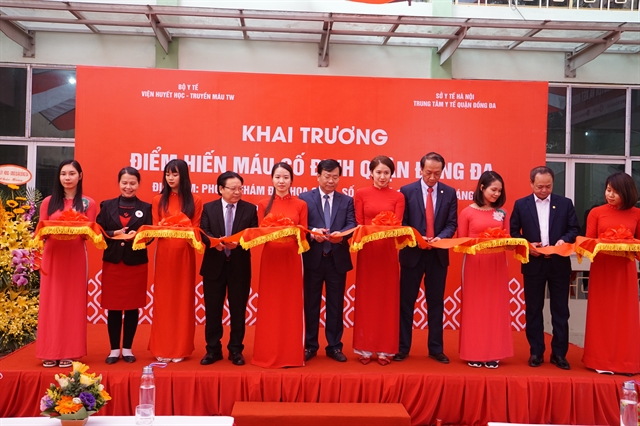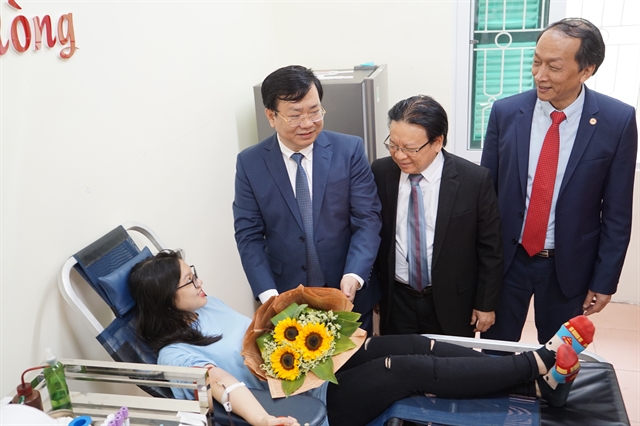 Society
Society


|
| Delegates cut the ribbon to open Hà Nội’s third fixed blood donation site in Đống Đa District. — VNS Photo Thanh Hải |
HÀ NỘI — The National Institute of Hematology and Blood Transfusion (NIHBT) opened its third fixed blood donation site in Đống Đa District, Hà Nội on Thursday.
The new site is located at the General Health Clinic No. 2 of Đống Đa District Medical Centre - No 10, Alley 122, Láng Street, Đống Đa District, Hà Nội.
“The opening of a new fixed blood donation site in Hà Nội would create more convenient conditions for people to participate in blood donation, handling the blood shortage situation at the end of the year and the upcoming Tết (Lunar New Year) holiday,” Director of NIHBT Dr. Bạch Quốc Khánh said.
“Adding a fixed blood donation site is an opportunity and a choice of time and place so that every citizen can donate blood regularly, thus helping the blood donation movement develop in efficiency, quality and a sustainable direction," said Khánh.
Previously, the institute opened the first site at Hoàn Kiếm Medical Centre – No 26 Lương Ngọc Quyến Street, in the heart of Hà Nội’s Old Quarter in June and the second at the Medical Centre of Nhân Chính Ward – No 132 Quan Nhân Street, in Thanh Xuân District in October.
Khánh said that the institute received 1,800 blood units at the first fixed blood donation site in Hoàn Kiếm District after 6 months and nearly 800 blood units at the second site in Thanh Xuân District after two months.
The sites are expected to make it more convenient for locals to donate regularly. People will also get free medical consultations and blood testing at the sites instead of going to hospitals. People and residents in surrounding areas can visit to the site to donate blood whenever they feel is most convenient.
Through the gift of testing packages, blood donors can get more useful information about health such as the number of blood cell components, liver and kidney function, early diagnosis and control of risk of cardiovascular disease, diabetes, blood diseases, cancer screening.

|
| Leaders of NIHBT and Đống Đa District visit a blood donor at the third fixed blood donation site in Đống Đa District, Hà Nội. — VNS Photo Thanh Hải |
Blood shortage occurs nationwide
NIHBT said that many localities across the country are facing a shortage of blood for emergency aid and treatment, especially blood types O and A, due to the lack of blood donors during the end of the year and Tết (Lunar New Year) holiday periods.
It is estimated that the whole country needs around 300,000 units of blood during this period. However, NIHBT said that its maximum blood collection is only about 200,000 units due to the decline of donors and increase of blood demand for emergency aid and treatment.
Nearly 50 per cent of blood is donated from students. Blood shortage usually happens during summer, as well as before and after the Tết holiday because many donors, mainly students, come back to their home towns for summer or Tết vacations.
In 2019, the country received over 1.6 million blood units, meeting 70 per cent of blood demand for emergencies, treatment and prevention. The NIHBT has provided 640,000 units of blood and blood products to 170 hospitals in 25 provinces and cities in the north, covering approximately 40 million people.— VNS